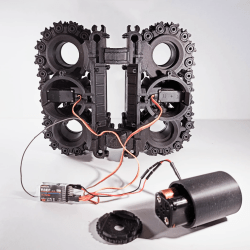There’s a mystique among both audiophiles and musicians about vacuum technology, thus having a tube amp still carries a bit of a cachet. New ones can be bought for eye-watering prices and old ones can be had for the same price with the added frisson of unreliability. Happily it’s surprisingly straightforward to build your own, as [_electroidiot] shows us with a fairly inexpensive build.
The design is inspired by the guitar amps of the 1950s and 1960s so it’s not for audiophiles. The circuit is a pretty conventional single-ended one with a two stage double triode preamp and a single power output tube. The transformers are usually the difficult part of a build like this one, and here instead of resorting to using a mains transformer for audio they come from a defunct 1960s Phillips radio. We especially like the old-school construction technique with a folded aluminium chassis and liberal use of tag strips on which to build the circuits.
The result is something that would have been in no way out of place in the 1960s, and proves that tube circuitry isn’t beyond the constructor in 2023. If it’s whetted your appetite for more, we can help you there.


















